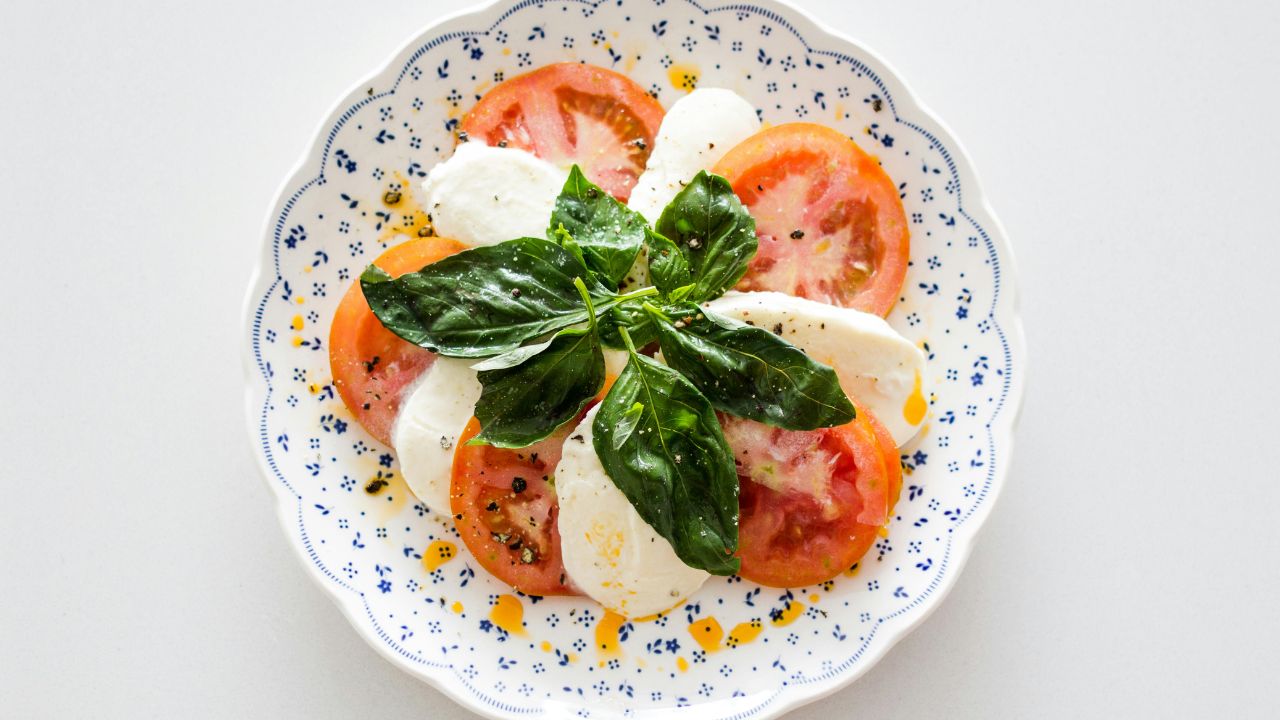If you’re bored with diets that seem like a straitjacket—counting calories, limiting carbohydrates, or eating the same meals daily—you may find your ticket to freedom in Roam Diet foods. roam diet recipes a hectic schedule, or just a taste of variation, this simple, flexible, and nutrient-conscious eating style stresses. Whether you’re meal-prepping for the week, packing lunch for work, or you need a quick dinner, Roam Diet meals keep you powered without the stress. This guide will explain the Roam Diet, offer great food ideas, and teach you how to fit this way of living for you. Let’s get going.
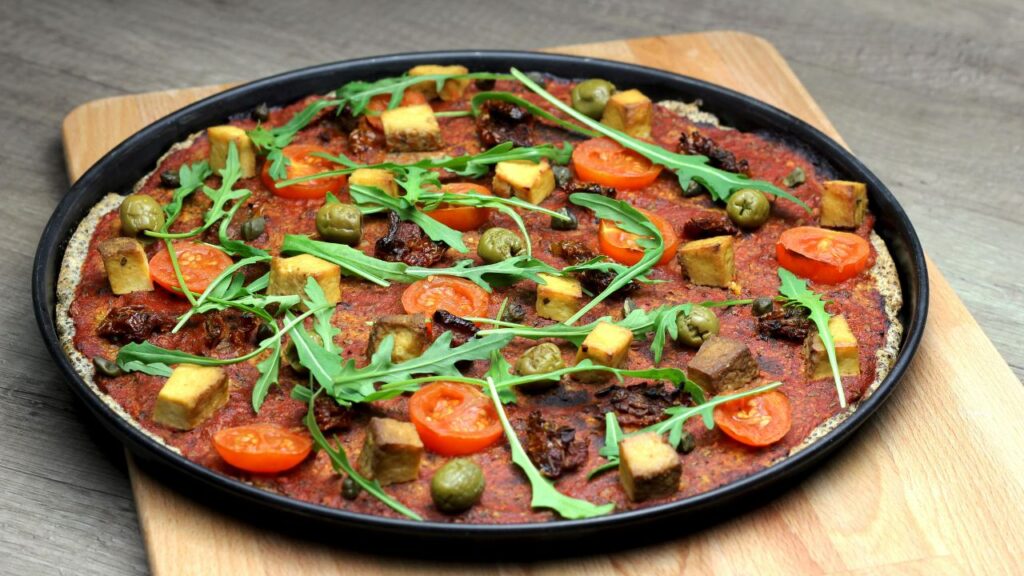
What Is the Roam Diet? A Fresh Approach to Eating
Those who desire to eat properly without strict guidelines are suitable for the Roam Diet. Real foods, optimized nutrition, adaptable meals, and few limits come from the moniker “Roam.” It leaves room for flexibility while stressing full, unprocessed foods like lean proteins, good fats, complex carbohydrates, and lots of vegetables. Consider it as a variation between intuitive eating and the Mediterranean diet—no rigorous calorie counting—just balanced meals that match your daily schedule. While keeping on target, you can “roam” between home-cooked meals, grab-and-go snacks, and even restaurant orders. Making good eating sustainable, fun, and customized to your life is the aim.
Why Roam Diet Recipes Work for Busy Lifestyles
Meals from the Roam Diet are created for actual living. Ingredients that are quick to make, readily available, and portable enough for lunchboxes or travel top priority. For instance, although sheet-pan dinners cook in 30 minutes with no cleanup, overnight oats can be ready the night before. Whether you’re hiking on weekends or in back-to–back meetings, the diet’s focus on balanced macros—protein, carbs, and fats—keeps energy levels constant. The adaptability also helps to lessen the “all-or-nothing” attitude; if you want pizza, you can have a slice and balance it with a salad heavy in vegetables. It is about development rather than perfection.
Essential Ingredients for Roam Diet Cooking
To streamline meal preparation, stock your kitchen with these Roam Diet classics:
Among proteins include eggs, canned tuna, rotisserie chicken, Greek yogurt, tofu, and lentils. These top salads, wraps, or bowls provide long-lasting energy.
Whole-grain bread, quinoa, oats, sweet potatoes, frozen brown rice—carbs. These slow-digesting complex carbohydrates prolong your feelings of satisfaction.
Avocado, olive oil, almonds, seeds, nut butter—fats. Good fats give meals taste and promote cognitive function.
Vegetables include bell peppers, frozen stir-fry combinations, cherry tomatoes, and spinach. To cut time, choose fresh, frozen, or pre-washed goods.
Garlicky, lemon juice, hot sauce, herbs, and low-sodium soy sauce are among taste boosters. Without additional calories, these keep meals interesting.
Easy Breakfast Recipes for Roam Diet Followers
Eat foods that take minutes to prepare first thing in the morning. Traditional overnight oats are rolled oats mixed with almond milk, chia seeds, berries in a jar and allowed to soak overnight. Make savory egg muffins by whisking eggs with chopped vegetables like mushrooms and spinach then filling a muffin tray and baking 350°F for 20 minutes. Greek yogurt parfaits pile yogurt with grains and mango slices; avocado toast tops whole-grain bread with smashed avocado, chili flakes, and fried egg. Blend a smoothie with frozen banana, spinach, protein powder, almond milk if you are hurried out the door.
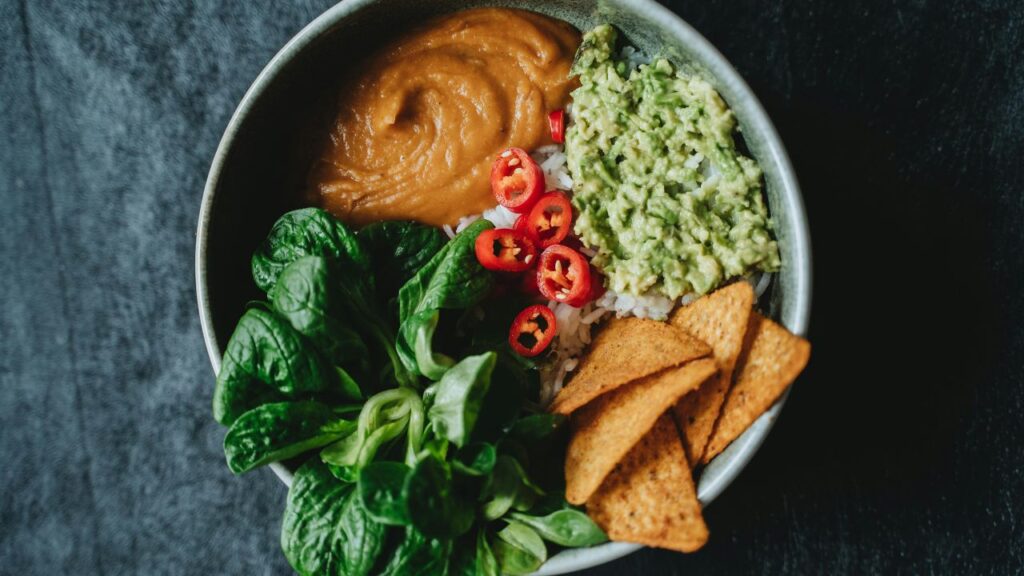
Lunch Ideas That Keep You Full and Focused
The Lunch on the Roam Diet is mostly about mobility and balance. Just shake before serving; quinoa salad jars stack cooked quinoa with chickpeas, cucumbers, feta, and a lemon-tahini dressing. Turkey wraps hummus on a whole-grain tortilla then top with sliced turkey, shredded carrots, and spinach. Pack a bento box loaded with hard-boiled eggs, cherry tomatoes, almonds, and apple slices with almond butter for a no-cook alternative. Serving over microwaved brown rice, quickly stir-fry frozen vegetables, tofu, and sesame oil if you’re at home.
Simple Dinner Recipes for Roam Diet Success
Dinner has no need for complexity. A lifesaver are sheet-pan dinners: mix olive oil and paprika chicken thighs, broccoli, and cubed sweet potatoes; bake at 400°F for 25 minutes. Grilled shrimp and store-bought pesto go nicely with zucchini noodles, sometimes known as “zoodles.” Try black bean tacos for a plant-based choice: stuff avocado, salsa, shredded cabbage, seasoned black beans into corn tortillas. Still hungry for comfort food? Bake a loaded sweet potato, cover it with Greek yogurt, chile, and green onions.
Snacks That Fuel Your Roam Diet Journey
Good snacking helps to control appetites. For a sweet-salty crunch, trail mix toss almonds, dark chocolate chips, and dried cranberries. Single-serve guacamole packs go especially well with vegetable sticks including bell peppers, celery, and carrots. Combine dates, oats, peanut butter, and cocoa powder to create energy balls—then roll them into bite-sized balls for a protein boost. A crunchy, delicious choice is roasted edamame seasoned with sea salt and garlic powder.
Meal-Prep Tips to Master the Roam Diet
Prepping on Sundays for one hour will save time all week. Basics in batch cooking include grilled chicken, roasted vegetables, and quinoa. Stow them in containers for quick grab-and-go dinners. Prepare banana, spinach, and protein powder in bags; just add liquid and combine freeze smoothie packs. To keep components fresh, toss salads or overnight oats in Mason jars. To prevent refrigerator mysteries, label everything with dates; keep a running food list on your phone to quickly replace basics.
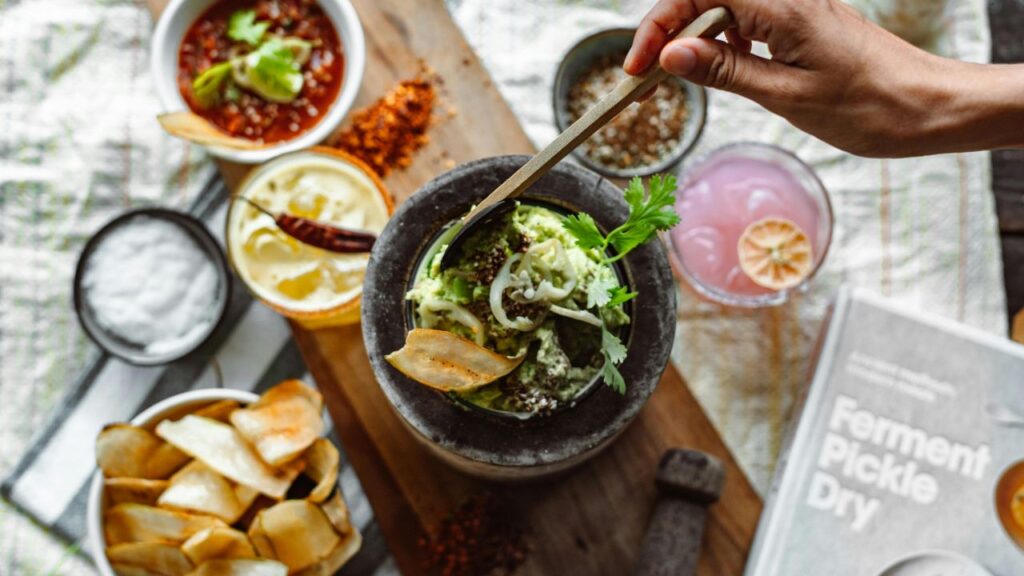
Customizing Roam Diet Recipes for Dietary Needs
The Roam Diet can practically fit any eating inclination. Veggie? In salads, substitute chickpeas for chicken; bake with flax eggs; choose coconut yogurt. Gluten free? Keep to quinoa, rice, and verified gluten-free oats. Low carbs? Emphasize cauliflower rice, zucchini noodles, and extra avocado-based protein and fat servings. Not dairy? While almond milk finds use in smoothies and oatmeal, nutritional yeast gives food a cheesy taste.
Eating Out Without Derailing Your Roam Diet
Life is full of dining out; the Roam Diet simplifies this aspect. Choose grilled chicken or fish and substitute steamed vegetables or a side salad for fries. Choose marinara-based dishes at Italian restaurants instead of creamy Alfredo. For sushi, choose sashimi or brown rice pick rolls. Salads including grilled chicken or lettuce-wrapped burgers help you stay on target at fast-food outlets. Recall that it’s about balance; savor that slice of pizza but match it with a side salad or vegetable soup.
Staying Hydrated with Roam Diet-Friendly Drinks
Digestion and energy depend on water. For taste without sugar, toss citrus pieces, cucumbers, or mint into water. Cozy evenings call for herbal drinks such as chamomile or ginger. Keep to black coffee or matcha lattes with unsweetened almond milk if you desire caffeine. To restore electrolytes, toss a little Himalayan salt and lemon into your drink just before a workout.
Budget-Friendly Grocery Hacks for Roam Dieters
Good eating does not have to be expensive. Buy frozen fruit and veggies; they are just as nutritious, less expensive, and keep better than fresh ones. Use canned proteins instead of more costly fresh cuts—tuna, salmon, or beans. For the greatest costs, shop seasonal produce—think of zucchini in summer, squash in November. For basics including oats, nuts, and spices, use bulk bins; sign up for grocery store loyalty programs to get discounts.
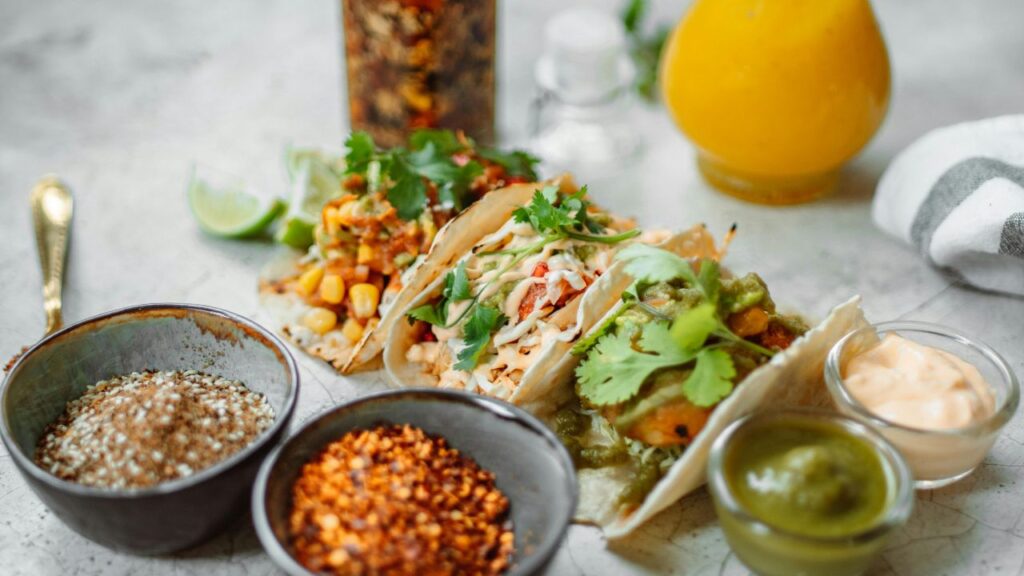
Common Mistakes to Avoid on the Roam Diet
There are drawbacks even in flexible diets. Ignoring protein can make you hungry; try to have a palm-sized serving at every meal. Generally speaking, stick to whole foods most of the time; overdoing “healthy” manufactured items like protein bars or shakes can cause sugar crashes. Ignoring portions include calorie-dense foods like nuts or avocado can build up; keep to a handful of nuts or half an avocado each serving. Finally, not arranging snacks usually results in vending machine runs; always pack Roam-friendly choices.
Roam Diet Recipes for Travel and On-the-Go
Moving does not imply giving up your diet. Stow plane-friendly munchies including cheese cubes, whole-grain crackers, and olives. Create a no-cook salad in hotel rooms combining canned tuna, pre-washed greens, travel-sized dressing. Use the hot water in the coffee maker to make instant oats in a mug for breakfast; add peanut butter and a banana for more taste. At road stops, pick fruit, unsalted almonds from convenience stores, or hard-boiled eggs.
Roam Diet vs. Traditional Diets
| Feature | Roam Diet Recipes | Typical Diets | Why It Matters |
| Flexibility | No strict rules; adapt meals to your lifestyle, cravings, or dietary needs. | Often rigid with fixed meal plans or banned food groups. | Reduces stress, promotes sustainability, and fits busy schedules. |
| Food Variety | Encourages seasonal, whole foods with global flavors (e.g., Mediterranean, Asian). | May limit ingredients to specific cuisines or repetitive “diet foods.” | Prevents boredom, boosts nutrient intake, and supports long-term adherence. |
| Macro Balance | Focuses on balanced plates (veggies, proteins, fats, carbs) without counting macros. | Often prioritizes one macronutrient (e.g., low-carb, high-protein). | Supports energy levels, digestion, and overall wellness without obsession. |
| Meal Prep Approach | Easy batch cooking with interchangeable ingredients (e.g., roasted veggies, grains). | May require pre-portioned meals or strict calorie tracking. | Saves time, reduces food waste, and simplifies healthy eating. |
| Dietary Adaptability | Easily adjusted for gluten-free, vegan, or low-carb needs with simple swaps. | May lack inclusivity for allergies or preferences (e.g., keto for vegans). | Ensures everyone can enjoy meals without feeling restricted. |
| Mindset | Emphasizes joy in eating; no “cheat meals” or guilt. | Often labels foods as “good” or “bad,” leading to guilt or binge cycles. | Builds a healthier relationship with food and body confidence. |
| Sustainability | Uses seasonal, local ingredients and minimizes processed foods. | Relies on specialty products or pre-packaged “diet” items. | Eco-friendly, budget-friendly, and promotes fresher, tastier meals. |
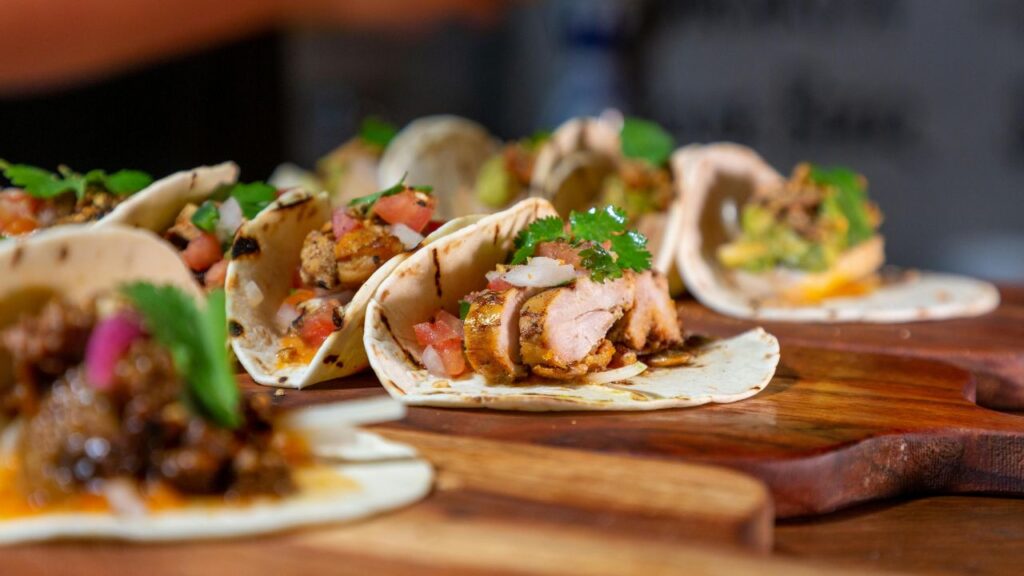
Why the Roam Diet Is Sustainable Long-Term
The Roam Diet is a way of life meant to last, not a cure-all fix. It fits easily into hectic schedules by emphasizing flexibility, healthful meals, and sensible preparation. You’ll stay away from burnout, savor several tastes, and keep vitality without feeling deprived. These behaviors eventually become second nature and enable you to remain healthy without resorting to extremes of diets.
FAQs
1. Can I drink alcohol on the Roam Diet?
Sure! Moderately stick to dry wine, light beer, or spirits with soda water.
2. Are sweet potatoes allowed?
Sure—they are a complex carb high in nutrients.
3. How do I handle cravings?
Savor treats sensibly; balance them with vegetables and protein.
4. Is the Roam Diet good for weight loss?
Emphasizing whole foods and portion awareness will help one promote weight loss.
5. Can I do the Roam Diet while vegan?
Of course! Give plant-based proteins including lentils, tofu, and tempeh particular attention.
